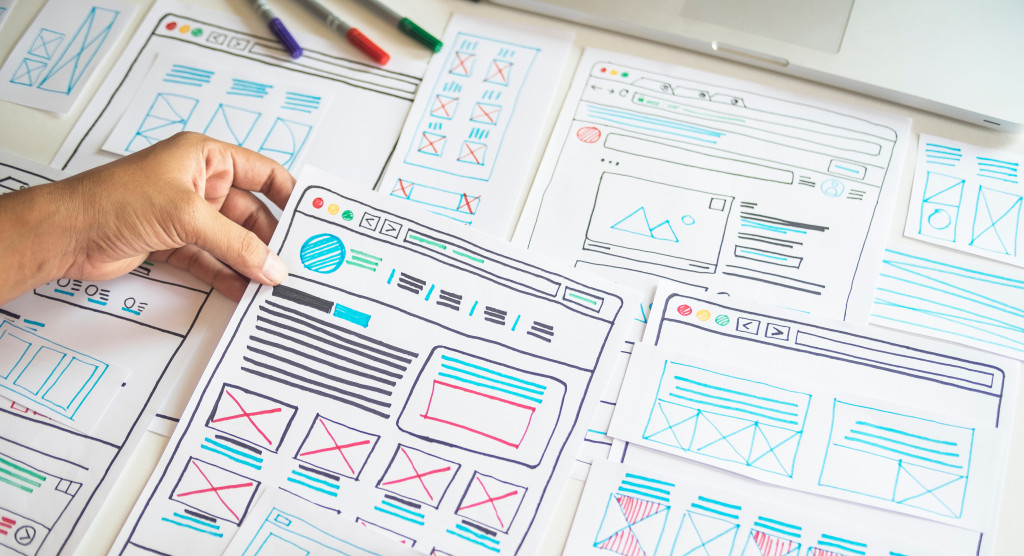- Optimize website loading speed by reducing image size, minimizing plugins and scripts, and leveraging browser caching.
- Ensure responsive design to ensure the website displays properly and functions seamlessly across various devices.
- Create a visually appealing design with a cohesive color scheme that reflects your brand’s identity.
- Craft compelling and clear messaging that communicates your value proposition and key messages.
- Consider hiring a web design expert to elevate your website’s first impression.
When it comes to your website, first impressions matter. In a digital age where attention spans are short and competition is fierce, capturing the attention of your visitors from the moment they land on your website is crucial. A positive first impression can increase engagement, longer browsing sessions, and more conversions. This guide will share five tips to help you improve your website’s first impression and ensure visitors are immediately drawn in and compelled to explore further.
1. Optimize Your Website’s Loading Speed
One of the key factors that can make or break a visitor’s first impression is the loading speed of your website. No one wants to wait for a slow-loading website in a fast-paced digital world. Slow loading times can lead to frustration and abandonment, negatively impacting the user experience.
Here are tips to optimize your website’s loading speed:
Reduce the Size of Your Images
Images are often one of the largest elements on a website, so reducing image size is essential for improving loading speed. Use an image compression tool to reduce file sizes without compromising quality. Compressing your images can help make them smaller in size and load faster.
Minimize Plugins and Scripts
While plugins and scripts can be useful, they may slow down your website’s performance if used excessively or incorrectly. Try using only necessary plugins and scripts regularly updated by their developers. Consider disabling any unnecessary plugins or scripts to ensure optimal loading time.
Leverage Browser Caching
Whenever someone visits your website, their browser has to download all of its content from your server. By enabling browser caching, you can reduce loading times by “remembering” the previously requested content and storing it in the visitor’s browser. This way, the browser won’t have to download the same website data whenever they visit your website.
Implement a Content Delivery Network (CDN)
A CDN is a network of servers located in different locations worldwide. These servers store copies of your website content and deliver them to visitors based on their location, which can drastically improve loading speeds for visitors from different regions or countries. Implementing a CDN can help improve your website’s performance and optimize visitor loading times globally.
2. Ensure Responsive Design

In today’s mobile-driven world, a responsive website design is essential for creating a positive first impression. With an increasing number of users accessing the internet via mobile devices, it’s crucial that your website displays properly and functions seamlessly across various screen sizes. A responsive design automatically adjusts and adapts the layout of your website to fit different devices, ensuring optimal user experience. When your website is mobile-friendly, visitors are likelier to stay and explore, leading to higher engagement and conversion rates. Make sure that text is readable, buttons are clickable, and images are appropriately scaled on mobile devices. Test your website across different devices and screen sizes to ensure a consistent and user-friendly experience for all visitors.
3. Create a Visually Appealing Design
Visual appeal plays a significant role in shaping the first impression of your website. A visually pleasing design can captivate visitors and entice them to stay longer. Choose a clean, professional design that aligns with your brand identity. Use a cohesive color scheme that reflects your brand’s personality and evokes the desired emotions. Incorporate high-quality and relevant images that enhance the visual appeal of your website. Pay attention to the typography and ensure it is legible and easily read. Avoid clutter and excessive use of visual elements that can overwhelm visitors. Strive for a balanced layout that guides the eye and highlights important information or calls to action.
4. Craft Compelling and Clear Messaging

Visitors should immediately understand your brand or business when they arrive at your website. Craft compelling, clear messaging that concisely communicates your value proposition and key messages. Use headlines, subheadings, and bullet points to break down information and simplify scanning. Highlight the benefits of your products or services and clearly state how they can solve the problems or meet the needs of your target audience. Use persuasive language that resonates with your visitors and compels them to take action. Avoid jargon or complex terminology that may confuse or alienate your audience. Keep your messaging focused and concise, ensuring visitors can quickly grasp the essence of your brand and offerings.
5. Hire a Web Design Expert
If you want to take your website’s first impression to the next level, consider hiring a professional web design expert. A web design expert has the skills, knowledge, and experience to create a visually stunning and user-friendly website that effectively communicates your brand’s identity and engages your target audience. They can help optimize your website’s layout, design, and functionality to ensure a seamless user experience. A web design expert can provide valuable insights and recommendations based on industry best practices and the latest design trends. Collaborating with a professional can elevate your website’s first impression and set you apart.
In Summary
Your website’s first impression can significantly impact how visitors perceive your brand and determine whether they choose to engage further or leave. By implementing the five tips discussed in this guide — optimizing loading speed, ensuring responsive design, creating a visually appealing design, crafting compelling messaging, and considering hiring a web design expert — you can enhance your website’s first impression and increase the chances of converting visitors into loyal customers. Remember, investing time and effort into improving your website’s first impression is a valuable investment that can yield long-term benefits for your online presence and business success.
